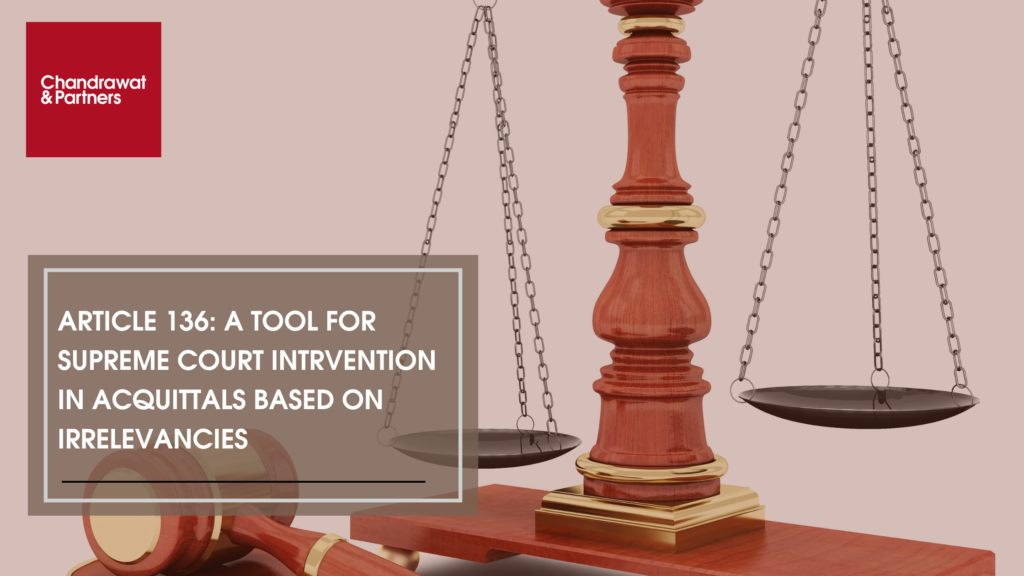Share :
Introduction
In the dynamic field of jurisprudence, seminal decisions frequently influence the course of legal doctrines and social standards. The State of Punjab v. Gurpreet Singh & Ors. case is a crucial point in time because it resolves complex legal issues while tackling important social issues.
BACKGROUND
The case revolves around FIR filed in 2012 for a murder case. The complainant alleged that his former son-in-law along with accomplices, shot and killed his wife. The motive for the crime was purportedly the accused’s desire to settle in Australia, which was hindered by his divorce from the complainant’s daughter, for which he blamed the deceased.
The Trial Court, relying on eye witnesses’ accounts and supporting evidence and convicted the accused and his accomplices, sentencing them to life imprisonment. However, the High Court overturned the conviction, citing various inconsistencies and doubts in the prosecution’s case, such as discrepancies in witness testimony, failure to conduct a test identification parade, and questionable nomination of additional accused persons.
The High Court emphasized that the prosecution failed to dispel reasonable doubt, leading to the acquittal of the accused. The State of Punjab appealed against this decision.
LEGAL PROCEEDINGS
The prosecution argued against the High Court’s acquittal of the accused, emphasizing that the Trial Court’s findings were well-reasoned and based on direct and unequivocal statements from the witnesses. He asserted that the witnesses had no motive to protect the real accused or falsely implicate innocent individuals. He contended that the accused harboured a grudge against the deceased, believing she played a role in his divorce, which served as a motive for the murder. He highlighted the witnesses’ prompt notification to authorities after the shooting and witnesses’ clear identification of the accused at the police station, further substantiated in court.
In contrast, the defense argued for caution in interfering with the High Court’s acquittal order, citing Article 136 of the Constitution. He questioned the credibility of the prosecution’s case, noting the absence of neighbour witnesses despite the incident occurring in broad daylight.
KEY ISSUES
At the heart of the matter lie several key issues that warrant careful consideration:
- Credibility of Eyewitness Testimonies: The core of the case relies on the testimonies of the complainant and his daughter as eyewitnesses to the crime. The Trial Court found their accounts trustworthy, while the High Court cast doubt on their credibility, citing inconsistencies in their statements and circumstances surrounding the incident.
- Recovery of Evidence: The prompt reporting of the crime by the complainant and the subsequent recovery of the weapon used in the murder play a significant role in establishing the prosecution’s case. The Trial Court considered these factors as evidence supporting the guilt of the accused, while the High Court questioned the reliability of the evidence presented.
- Applicability of Article 136: The State of Punjab appeals against the acquittal of the accused, arguing for the intervention of the Supreme Court under Article 136 of the Constitution. The case raises questions about the circumstances under which the Supreme Court should intervene in orders of acquittal passed by lower courts.
- Judicial Discretion and Standard of Proof: The differing interpretations of evidence by the Trial Court and the High Court highlight the exercise of judicial discretion and the standard of proof required for conviction. The case prompts a review of the legal principles guiding the assessment of evidence and the determination of guilt in criminal proceedings.
SUPREME COURT’S OBSERVATION
As a result, the Hon’ble Supreme Court carefully reviewed the case and believe that the High Court misinterpreted the available evidence to arrive at its absurd justifications for acquitting the accused. According to this interpretation of the case, upholding the accused’s acquittal would be a mockery of justice, and as such, Supreme Court’s intervention in the exercise of its jurisdiction which we only occasionally use is justified. Because of this, the High Court’s acquittal ruling regarding Gurpreet Singh is void and is set aside.
CONCLUSION
The case serves as a moving reminder of the ongoing fight for justice and honesty in the halls of power as it nears its conclusion. This case is more than just a court case; it represents the goals, values, and common conscience of a country working toward a fairer and just future.
The ability of a democracy to maintain the rule of law and make sure that justice is blind, unbiased, and unyielding in the face of hardship is the ultimate measure of that democracy.
For more information or queries, please email us at
enquiries@chandrawatpartners.com




